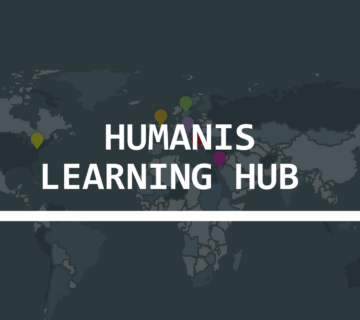Is D&I just about numbers and statistics? The branding of an employer image that promotes Diversity and Inclusion is now an urgent need for companies if they want to attract talent – especially from the ever-demanding generation Z – but also to be able to navigate in the new business reality of the post-pandemic era.
What organizations often fail to grasp is that the concept of D&I goes beyond meeting specific business KPI’s and ticking the boxes of ESG checklists, such as hiring people of different gender or color. A conscious D&I approach helps create a diverse and inclusive environment that drives organizations to exceptional business results. According to research, organizations implementing consistent D&I policies saw 35% better results than their competitors in revenue, profitability, number of customers, as well as employee satisfaction, engagement, and trust.*
D&I is no longer just an ethical issue. It is a powerful leadership tool for organizations to foster a culture of trust, collaboration, and optimal results.
Leaders and employees reflect the company brand name
Diversity is an organizational initiative established to leverage the power of difference to create high performance, while Inclusion is an employee supportive environment where all employees experience equitable opportunity for success; and equitable opportunity to contribute to the organization’s success. When diversity is part of the organizational strategy, the behaviors leaders and employees reproduce to partners, customers and suppliers are similar. According to McKinsey***, organizations must take full advantage of the opportunity presented by diverse and inclusive leadership teams – to strengthen their image as an employer of choice – particularly in the areas of talent management: attracting, developing, mentoring and retaining the next generation of global leaders.
Why are we not fundamentally inclusive, even though we all recognize the value of D&I?
Human beings are “programmed” to choose friends, colleagues, partners who are similar to them both in personal characteristics, as well as in habits and behaviors. This results from the unconscious bias that people with similar characteristics understand each other better and communicate and collaborate more effectively. So often in business life, we hire, develop, or promote people based on our own beliefs. And the strange thing is that we don’t even realize it. As psychologists and neuroscientists estimate, we are fully aware of only 5-10% of how we behave. The remaining 90-95% is subconscious. **
How do we build a D&I culture?
Without resolving our unconscious biases and our corresponding behaviors, Inclusion cannot be implemented.
So, can people really change their mindset? The answer is yes. If we understand WHY we behave as we do and acknowledge our unconscious biases, it takes training to rethink and redefine the way we operate. And correspondingly, organizations that encourage open communication, creativity and different ways of thinking, pave the way to a “fresh” and attractive work environment.
In the aftermath of the pandemic, which brought the rapid transition to remote work environments and the ever-changing map of required skills to cope with the new and unexpected everyday work life, Humanis recognized the need to diversify the way leadership skills are developed. In the past, we focused on developing functional skills and behaviors, while now we have shifted our focus to developing cognitive skills and accomplishing attitude change. By doing so, we achieve personal transformation which is non-reversible and ensures conscious and consistent effort for better results, maximizing the ROI of human resources training and development.
What is the role of D&I in finding and retaining talent?
In a recent PwC survey ****, more than 80% of participants stated that the implementation of D&I practices, as well as them being highlighted during the recruitment process, was one of the key factors in their choice of employer. Indeed, according to research, organizations are at “business risk” if they present an employer image that does not support diversity and inclusion. In an age when finding and retaining talent is becoming more challenging by the day, having ambassadors to ensure a D&I culture and corporate practices is vital. Businesses with D&I policies improve employee morale, increase engagement, and add value to the company, establishing trust, loyalty, and a favorable employer image.
The ultimate goal of a high-performing organization is to move from Diversity and Inclusion to Compatibility
“Employer of choice”: From D&I to Compatibility
Becoming the “Employer of choice” means implementing a D&I strategy that fosters Compatibility by integrating the following five operating leadership principles into the organizational culture:
1. Collaboration—working with others in a mutually respectful, trusting, open, and supportive way.
2. Reconciliation—working with others to amicably resolve and synergize differences.
3. Receptiveness—working with others in an open, transparent, and transformational environment.
4. Resilience—working with others to proactively respond to conflict, adversity, and change as learning experiences.
5. Cohesiveness—working with others as a connected, aligned, and united organization of One.
At this point the organization is ready to attract diverse talent and to integrate, align and unleash their creativity. When people enjoy all the above qualities, they can only feel that they are in the best working environment.




